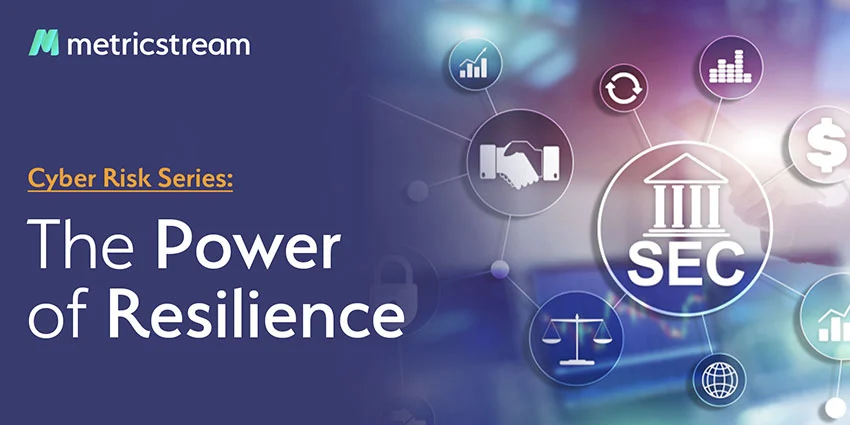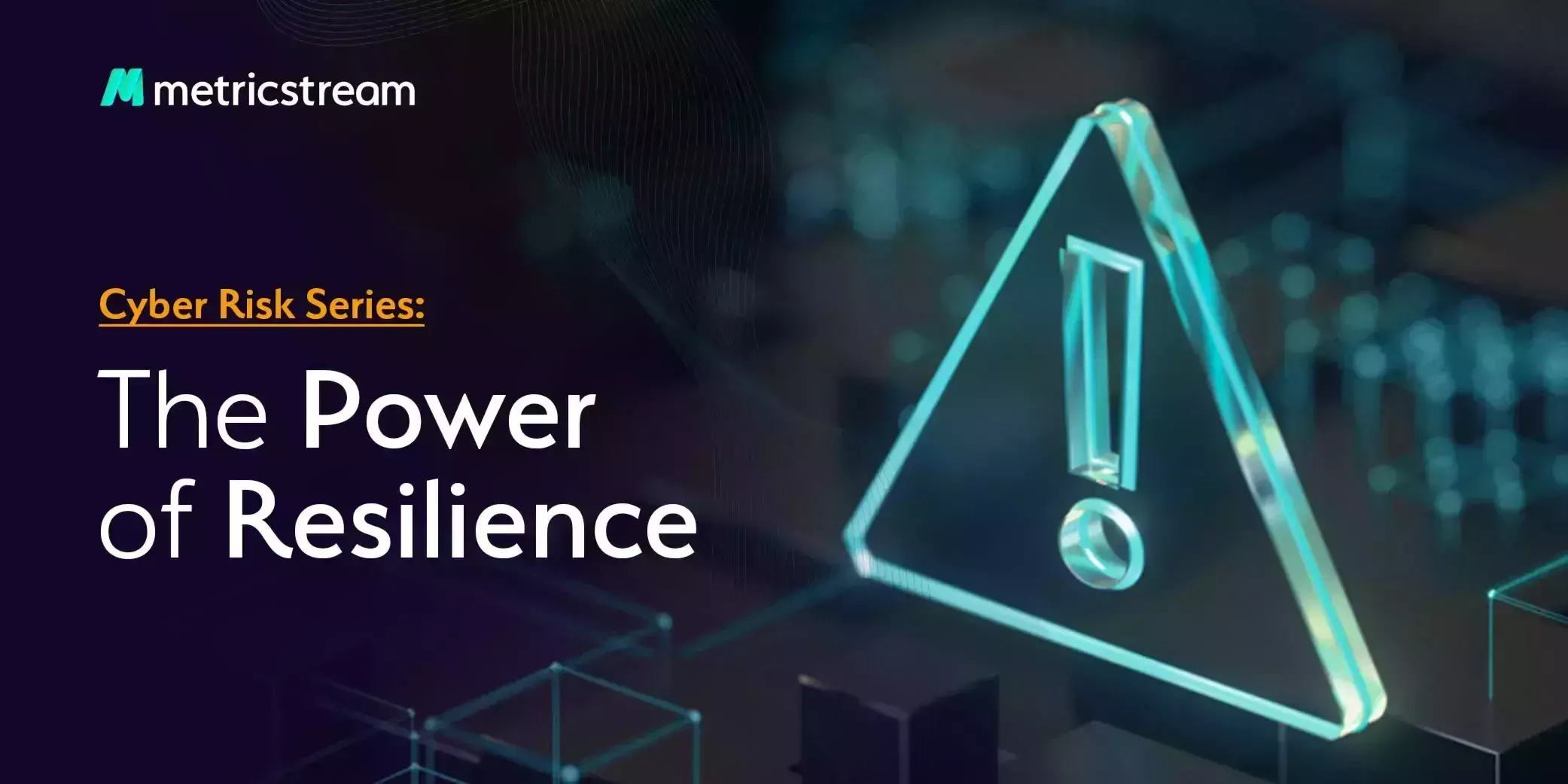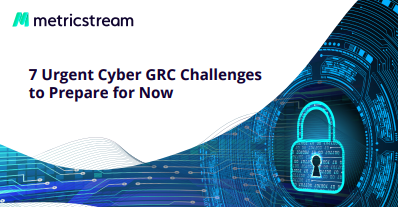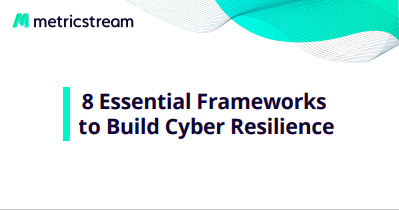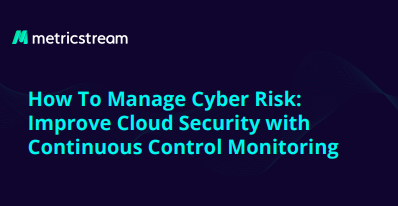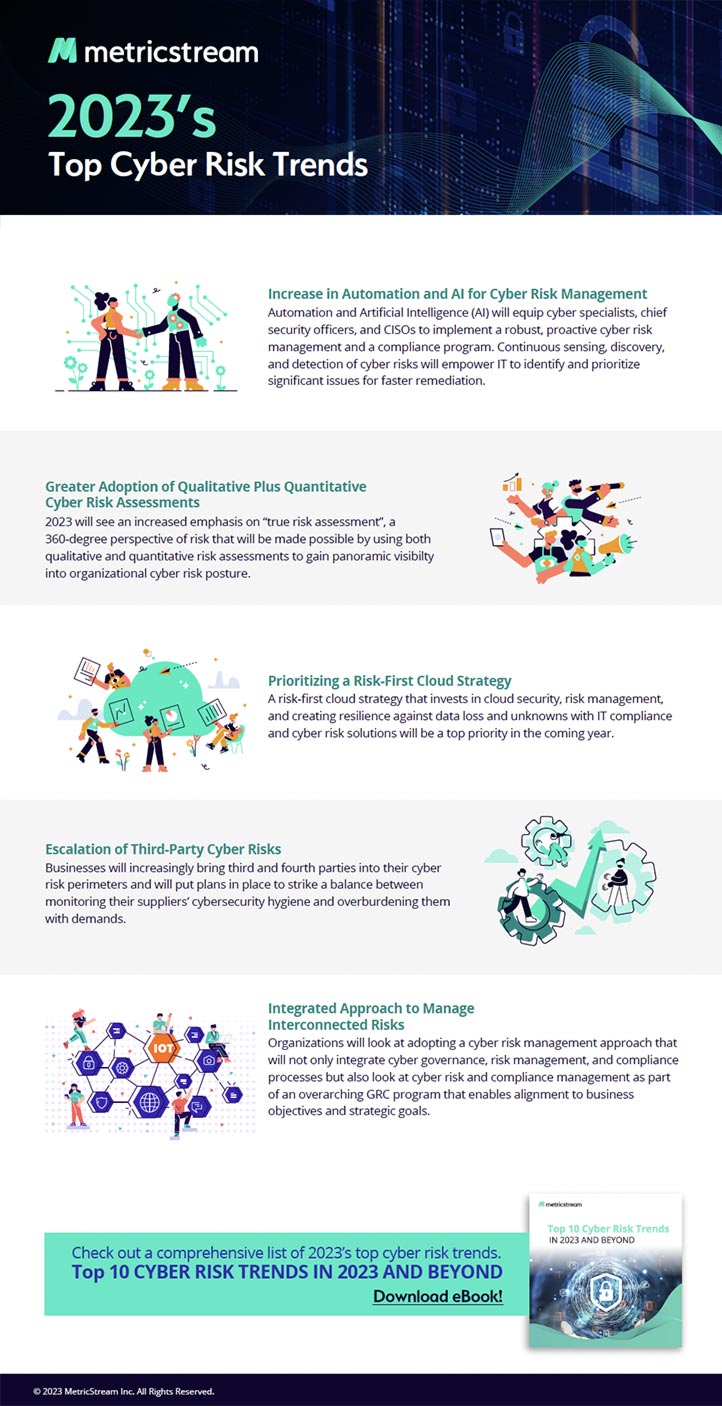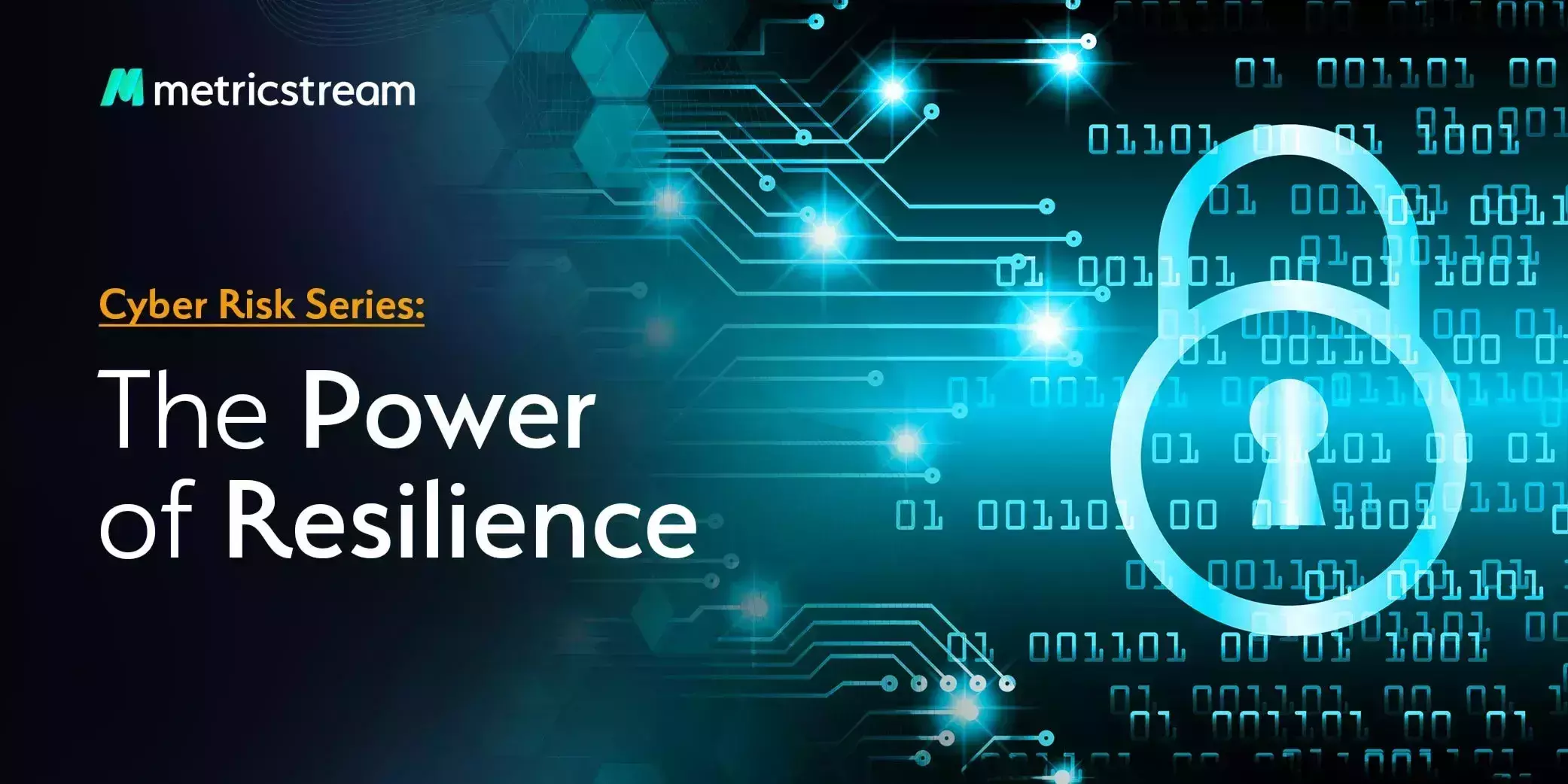Achieve Compliance with SEC’s New Cybersecurity Rules
- IT Risk & Cyber Risk
- 06 September 23
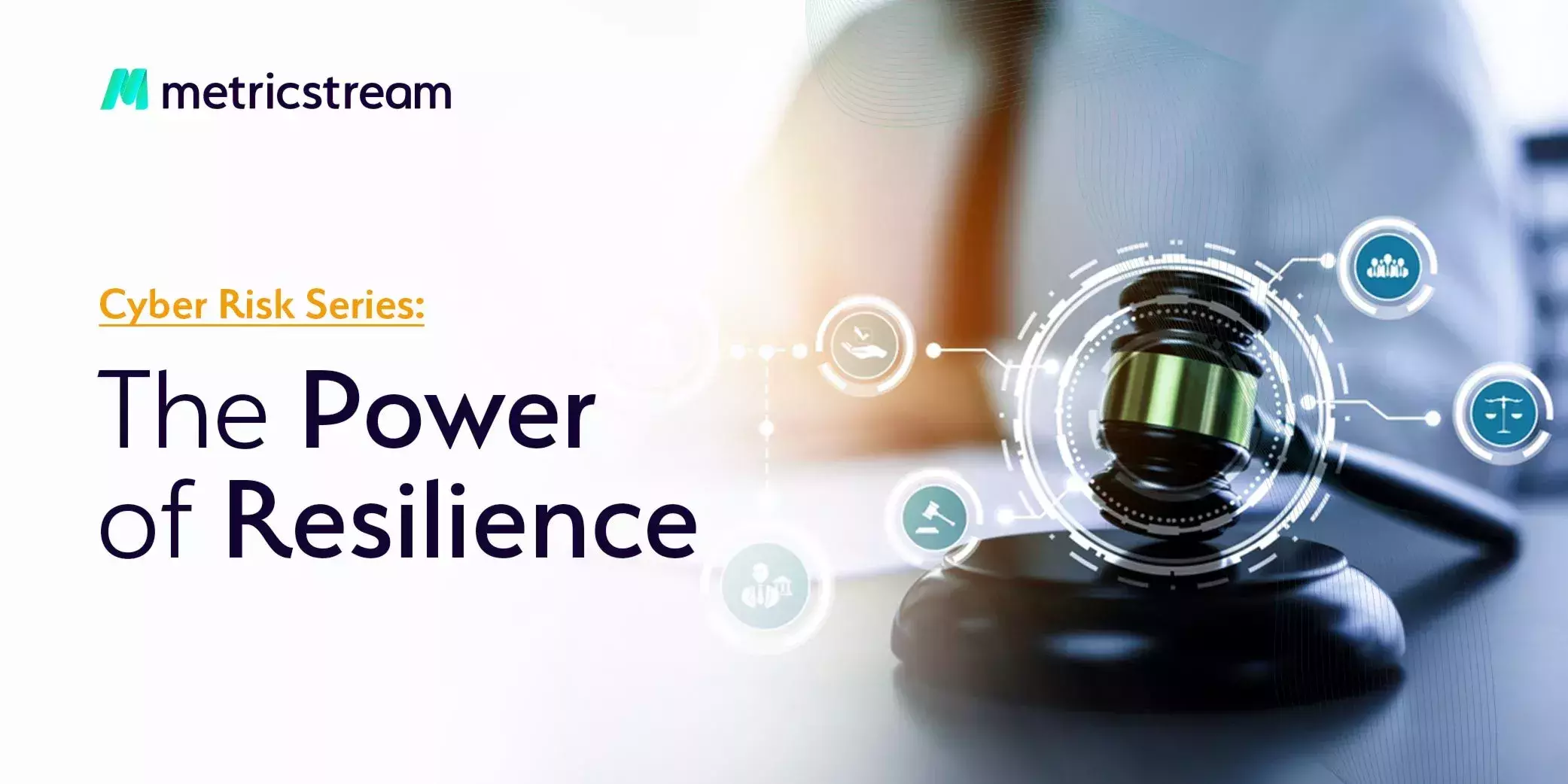
Introduction
The clock is fast ticking for public-listed organizations to ensure compliance with Cybersecurity Risk Management, Strategy, Governance, and Incident Disclosure by Public Rules (rules) recently adopted by the U.S. Securities and Exchange Commission (SEC). The rules, set to come into force from December 2023, are expected to improve transparency for investors, customers, and other stakeholders in matters related to a company’s cybersecurity risk management and governance processes.
One of the key requirements under the new rules is for public companies to report material cybersecurity incidents to the SEC within 4 days of determining the materiality of the incident. However, what constitutes “material” is somewhat of a gray area.
Let’s take a closer look.
Incident Materiality and Reporting Timeline
As per the final rules:
- A cybersecurity incident is described as “an unauthorized occurrence, or a series of related unauthorized occurrences, on or conducted through a registrant’s information systems that jeopardizes the confidentiality, integrity, or availability of a registrant’s information systems or any information residing therein.”
- While “Materiality” has not been explicitly defined in the rules, it refers to the “nature, scope, and timing of the incident, and the material impact or reasonably likely material impact on the registrant, including its financial condition and results of operations.”
In the press release, the SEC relied on the definition set by judicial precedent, “Information is material if there is a substantial likelihood that a reasonable shareholder would consider it important in making an investment decision, or if it would have significantly altered the 'total mix' of information made available.”
Further, the SEC explained that companies should consider both qualitative and quantitative factors to determine the material impact of an incident. It explained:
“By way of illustration, incidents violating a company’s security policies or procedures, or affecting a company’s reputation, financial condition, operations or causing harm to a company’s customer or vendor relationships, or competitiveness may all be considered as examples of a material impact on the company. Similarly, the possibility of litigation or regulatory investigations or actions, including regulatory actions by state and Federal Governmental authorities and non-U.S. authorities, may constitute a reasonably likely material impact on the registrant.”
While these are good examples of cybersecurity incidents, it leaves ample scope for subjective judgment on the part of organizations as to what constitutes “materiality”. It will also vary from organization to organization depending on factors such as the scale of their operations, nature of business, type of products, and criticality of the information residing in their systems.
So, in the absence of a clear definition, it is advised that CISOs, IT risk professionals, and other executives in charge of compliance with the rules, display complete honesty and transparency, erring on the side of caution.
The other aspect to consider is that the rules require organizations to make their materiality determinations “without unreasonable delay” – which, again, seems open to interpretation. The SEC explains:
“A company being unable to determine the full extent of an incident because of the nature of the incident or the company’s systems, or otherwise the need for continued investigation regarding the incident, should not delay the company from determining materiality. Similarly, if the materiality determination is to be made by a board committee, intentionally deferring the committee’s meeting on the materiality determination past the normal time it takes to convene its members would constitute unreasonable delay.”
To put things into perspective, the mean time to identify a breach in 2023 is 204 days, according to IBM’s Cost of a Data Breach Report 2023. So, the timelines for an organization to detect a breach, determine its materiality, and then report it to the SEC – could be ambiguous in practice.
Nonetheless, the final rules are a great initiative in the right direction. Among other things, it will compel organizations to improve the maturity of their incident detection & response and overall cyber risk management and governance processes. We could see future revisions that offer more clarity and/or more requirements for companies to adhere to.
Join our upcoming webinar on September 13th, where we will analyze the SEC’s new cybersecurity rules and discuss key strategies and best practices to achieve compliance, along with domain experts:
How MetricStream CyberGRC Can Help
In a previous blog, I delved into the key requirements that organizations need to meet and the strategies that can help them achieve this goal. Here’s a look at how MetricStream CyberGRC can help you achieve compliance:
| Under the SEC Rules, You Need to | With MetricStream CyberGRC, You Can |
|---|---|
| Report material cybersecurity incidents to the SEC within 4 days of determining the materiality of the incident, subject to an additional extension of the timeline at the Attorney General’s discretion | - Establish consistent procedures for incident documenting, analyzing, and remediating all the way till closure - Maintain a single source of truth for incident lifecycle for quick and efficient reporting |
| Annual Reporting on the processes for assessing, identifying, and managing material cybersecurity risks, including third-party risks, and whether any cyber risks have had a material effect or are likely to do so | - Assess and manage IT and cyber risks in a standardized manner using industry frameworks, such as ISO 27001 and NIST - Generate comprehensive reports providing in-depth visibility into the overall security posture |
| Annual Reporting on the board’s oversight of cybersecurity risks, the management’s role and expertise in assessing and managing material cybersecurity risks, and how the board/subcommittee is informed about cyber risks | - Leverage user-configurable reports with role-based views into relevant risk, threat, vulnerability, and control data in real-time – which can be presented to the board and top management - Record and maintain the expertise of the members of the management team or cyber risk committee/subcommittee members |
| Disclose whether they are engaging with third-party assessors, consultants, or auditors in connection with any cybersecurity processes | - Document and maintain information on third parties mapped to relevant details such as IT assets, business units, products or services, contracts, spend, certifications, ongoing assessments, country, risk or compliance issues, due diligence status, etc. - Generate reports that provide insights into risks, compliance, and performance of third-party vendors |
| Describe whether and how cybersecurity processes have been integrated into the overall risk management system or processes | - Implement an integrated GRC solution to obtain real-time status monitoring and comprehensive reports, providing in-depth visibility into overall risk management systems and processes |
Learn more about how MetricStream can help achieve compliance with the SEC’s cybersecurity rules:
Staying Secure in the Energy Sector: 5 Cyber Risks You Must Prioritize
- IT Risk & Cyber Risk
- 23 August 23

Introduction
Top Five Cyber Risks Faced by the Energy Industry Today
According to the X-Force Threat Intelligence Index 2023, the energy industry is the fourth-highest industry sector to be targeted by cyber attacks. The Colonial Pipeline incident—despite it being two years since the ransomware attack occurred—still remains a poignant example of the serious repercussions that a cyber attack can exert on critical infrastructure. This event underscored the impact of a cyber event on the energy supply chain: fuel shortages for countless citizens, substantial expenses for mitigation and recovery, and long-term damage to the reputation of the affected company.
With nearly every business decision in our world relying on the thousands of companies producing electricity, coal, oil, natural gas, nuclear power, and renewable fuels such as geothermal, hydropower, solar, and wind, cyber risk management is a top priority.
However, effectively managing and mitigating cyber risk and building cyber resilience can be challenging. Apart from dealing with a multi-threat environment with geographically dispersed targets, energy companies face several other cyber risk challenges unique to the industry.
Top Five Cyber Risks Faced by the Energy Industry Today
Diverse and Expansive Threat Landscape:
The energy industry continues to be a prime target for cyber threats, ranging from nation-state actors seeking to cause economic dislocation to cybercriminals aiming for financial gain. These threats are further intensified by the industry's expansive attack surface, resulting from the geographic and organizational complexity and the increasing use of interconnected systems. Vulnerabilities exist across the entire value chain, from generation to transmission to distribution, and pose significant risks to operational technology (OT) infrastructure and third-party entities within the supply chain.
Interdependencies Between Physical and Cyber Infrastructure:
The energy industry's reliance on Internet of Things (IoT) technologies for operational efficiency creates unique interdependencies between physical and cyber infrastructure. Malicious actors can exploit these connections, leading to disruptive events with severe economic and physical consequences. For instance, cyberattacks on wireless smart meters, smart thermostats, or OT systems controlling critical assets can have devastating impacts on operations and supply.
Internal Concerns and Cyber Hygiene:
Maintaining good internal cyber hygiene presents challenges for the energy industry. With multiple interconnected systems, tracking and managing all cyber risks becomes difficult. Additionally, a decentralized approach to cybersecurity leadership and third-party cyber risk sharing across various departments can lead to vulnerabilities. The industry also faces a shortage of qualified cybersecurity professionals, making it challenging to build a robust defense against cyber threats.
Regulatory Compliance Across Global Operating Environments:
Energy companies often operate across diverse global industrial environments, each subject to different regulatory requirements and standards. Ensuring compliance while managing cyber risks demands dedicated resources and expertise to protect critical infrastructure effectively. Failure to comply with regulations can lead to severe legal and financial repercussions.
Rapid Cloud Adoption and Data Security:
The energy industry's adoption of cloud services for flexibility and scalability has introduced new cyber risks. Cloud-based data breaches can result in the loss of consumer trust and reputational damage. Energy companies must ensure robust data security measures and stringent access controls to safeguard sensitive information stored in the cloud.
Manage Cyber Risk and Build Resilience with MetricStream CyberGRC
Safeguarding this crucial sector and the communities it serves necessitates proactive and comprehensive measures to address cyber risk effectively. A robust cyber risk program should leverage technologies such as AI and automation, which can process and analyze large amounts of data. Additionally, Continuous Control Monitoring (CCM) and automation are essential because of the ability to work all the time and identify and flag anomalies.
With CyberGRC, your organization is empowered with:
- Active IT and cyber risk management to reduce the risk of cyber breaches
- Cyber risk quantification to measure risk exposure and prioritize cyber risks
- AI and automation for greater efficiency
- Continuous control monitoring for improved compliance and security
- A single, unified view of your cyber risk profile
To explore more about the challenges faced by the energy industry and how your organization can transition from a conventional approach to a connected cyber risk strategy, check out our eBook, which provides valuable insights and practical steps to fortify your organization against cyber threats in the energy landscape.

Cybersecurity vs Cyber Risk Management: What are the Similarities and Differences?
- IT Risk & Cyber Risk
- 16 August 23
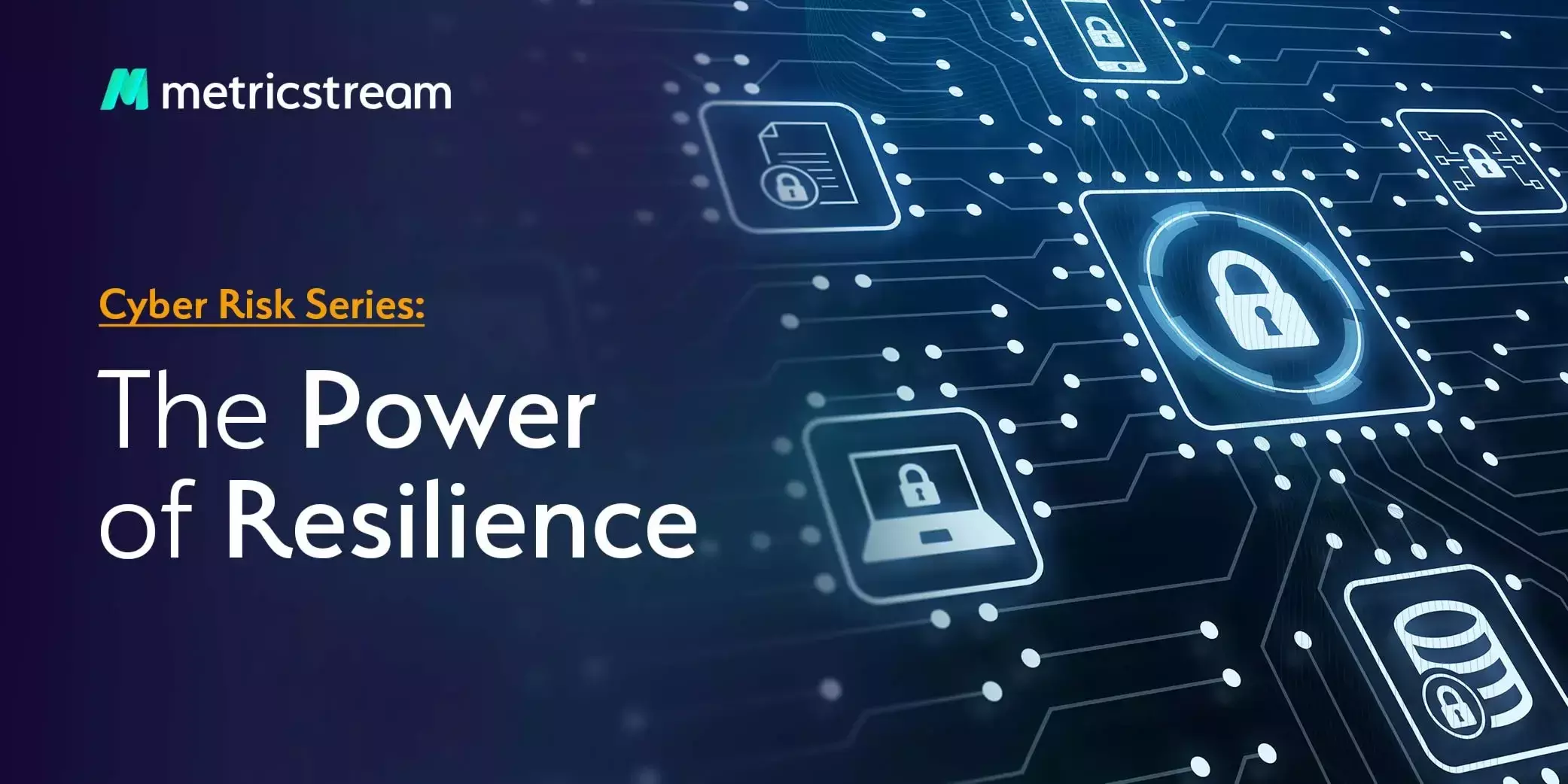
Introduction
Cybersecurity and cyber or IT risk management are essential components of any organization's strategy to navigate the complex and ever-evolving landscape of cyber threats.
But while the two terms – cybersecurity and cyber risk management-- are often used interchangeably, they are two distinct practices that work in conjunction to protect an enterprise from cyber attacks. As the threat landscape evolves further, it is crucial to have calculated and robust strategies for both to maintain a strong, secure, and proactive digital environment. And to do so, it is important to clearly understand the similarities and differences between the two.
Understanding Cybersecurity
As the word implies, cybersecurity practices aim to protect and safeguard not just information/data, networks, and digital infrastructure but also physical devices and even premises from malicious attacks and damage.
Cybersecurity includes a set of people, methods, processes, practices, and technologies that are put in place to protect an enterprise’s data, systems, and networks from threats ranging from unauthorized access and damage to attacks, disruptions, and theft, among others. Cybersecurity is a broad strategy that includes factors like infrastructure security, data protection, network application security, disaster recovery, and end-user education and awareness. It focuses on threat prevention, vulnerability management, and incident response to protect information and information systems and ensure confidentiality, integrity, and availability of data.
Specifically, this includes four key aspects:
Physical security
or measures to protect computer systems and networks from unauthorized physical access and/or damage from events like fire or vandalism, and to safeguard from breaches resulting from theft. Some methods employed include security guards, access controls, fencing, and boundaries, among others.
Network security
that focuses on protecting computer networks from unauthorized access. This is achieved through measures like firewalls, antivirus systems, intrusion detection systems, and encryption.
Application security
that aims to protect software applications from attacks and manipulations. Modern applications are being developed with intrinsic security measures – where security is built into the design rather than being added on later. Despite this, there can still be vulnerabilities within an application that hackers can exploit. Cybersecurity strategies are designed to protect applications from such attacks/manipulations.
Information/Data security
that protects enterprise data – which includes the enterprises’ own information and even customer and third-party data. Cybersecurity practices focus on protecting sensitive enterprise data from unauthorized access, disclosure, or modification, and some methods to achieving this are encryption, access control, firewalls, authentication protocols, backups, and regular purging, among others.
Understanding Cyber/IT Risk Management
Cyber and IT risk management involves identifying, assessing, prioritizing, managing, and responding to the various risks associated with information/data, IT assets, and the use of digital technologies, and their potential impact on an organization. Identifying and mitigating risks of this nature requires strategic planning and informed quick decision-making.
The key steps/processes involved in cyber / IT risk management are:
Identify
– In this step, it is crucial to identify and inventory the digital assets, potential threats, and vulnerabilities, and to determine the criticality and value of each asset in terms of its impact on business operations.
Risk Assessment
– This is a systematic process that evaluates an organization's vulnerabilities, threats, and potential impacts related to its information systems and digital assets. It involves defining the scope, identifying critical assets, and pinpointing potential threats. The assessment also includes examining system vulnerabilities and analyzing risks based on likelihood and impact. Mitigation strategies are then developed to reduce or address the identified risks, and an action plan is created. Ongoing monitoring ensures the effectiveness of implemented controls and the need for adjustments. Through this process, organizations can gain a clearer understanding of their cyber risk posture, enabling informed decisions and improved resilience against cyber threats.
Risk Mitigation
- This is followed by risk mitigation or the development and implementation of strategies to address identified risks. These may include measures like implementing robust security controls, adopting best practices, creating processes to be followed, and even inculcating a risk-aware culture within the enterprise.
Risk Monitoring and Response
– This stage involves continuous monitoring of assets, systems, and networks to detect potential cyber incidents. It also includes the implementation of a bespoke incident response plan and processes to analyze incidents and contain and remediate them, communicate with essential stakeholders, and conduct post-incident analysis.
Review and Update
– in this stage, regular review and updates to the cyber risk assessment should be carried out to account for changes in the threat landscape, technology landscape, and business environment. Cyber risk teams must assess the effectiveness of implemented controls and adjust mitigation strategies as needed and consider conducting periodic comprehensive assessments to ensure ongoing risk management effectiveness.
Examining the Similarities
Evidently, there is some overlap and similarities between cybersecurity and cyber risk management strategies, and they complement each other:
Protection
- Both practices aim to protect enterprise assets—including systems, devices, networks, and data—from cyber threats.
Threat Awareness
- Both practices aim to improve threat awareness as they require a thorough understanding of the evolving risk landscape and the threats facing the organization.
Minimize Impact
- Both practices aim to minimize not just the likelihood of threats and risks, but also their impact on the organization.
Understanding the Key Differences
For all the similarities, there are significant differences between the two. They vary significantly in their focus, strategic approach, and scope, as listed below:
| Point of Difference | Cybersecurity | Cyber Risk Management |
|---|---|---|
| Scope and Focus | Primarily focuses on protecting computer systems, networks, and data from unauthorized access, attacks, and damage. It involves implementing preventive measures, such as firewalls, encryption, access controls, and security patches, to safeguard against potential threats. | The focus is broader and involves the identification, assessment, and prioritization of potential risks and vulnerabilities in an organization's digital infrastructure. It encompasses not only technical aspects but also the business impact and financial consequences of cyber threats. It aims to manage risks proactively, considering a range of factors such as threat likelihood, potential impact, and risk tolerance. |
| Objectives | To establish a secure environment, protect sensitive data, maintain confidentiality, integrity, and availability of information, and prevent unauthorized access and malicious activities. | To identify, assess, and mitigate potential risks to the organization's information assets. It involves understanding the likelihood and potential impact of various cyber risks and implementing strategies to minimize or transfer those risks. |
| Approach | Focuses on implementing security measures, policies, and technologies to prevent and detect security breaches. It involves deploying firewalls, antivirus software, intrusion detection systems, and other security controls to protect against known threats and vulnerabilities. | Takes a holistic approach that goes beyond technical controls. It involves risk assessment, risk analysis, risk treatment, and risk monitoring. This includes identifying and prioritizing risks, implementing risk mitigation strategies, developing incident response plans, and regularly monitoring and updating risk management practices. |
| Perspective | Typically takes a narrow view from a technical standpoint, emphasizing the protection of systems and networks. It focuses on defending against specific threats and vulnerabilities using technical controls and measures. | Takes a broader organizational perspective. It considers business objectives, regulatory compliance, legal implications, reputation management, and financial consequences. |
One can consider cyber risk management as the strategic foundation that assesses a wide variety of risks and identifies ways in which to mitigate each one, while cybersecurity is a tactical, hands-on approach to defending assets against whatever threatens them. Managing cyber risk requires a deep understanding of the potential consequences of a cyber incident and effective implementation of risk mitigation strategies to minimize the impact on an organization's objectives and stakeholders.
Cybersecurity and cyber risk management align in their objective of safeguarding organizations against cyber threats, yet they adopt distinct perspectives and methodologies. The practices complement each other and have equally important roles in ensuring comprehensive protection and effective risk mitigation. By integrating both disciplines into their overall cybersecurity and risk management strategies, organizations can build a robust and proactive defense posture against a continuously evolving risk landscape.
Proactively Manage Cyber Risk with MetricStream
MetricStream’s IT and cyber governance, risk, and compliance solution, CyberGRC empowers organizations to connect all types of cyber risk data from across the enterprise and leverage actionable business intelligence to make data-driven decisions to build cyber resilience. With CyberGRC, your organization can:
- Gain a single, consolidated, and comprehensive view of your cyber risk posture across all risk areas and objects
- Complement the cyber security tools to reduce the risk of cyber breaches with active risk management
- Ensure compliance with cyber-related regulations and frameworks, thereby reducing compliance risk
- Streamline the management of IT and cyber policies and documents and ensure compliance with all
- Identify, assess, mitigate, and monitor third-party IT risks, while also proactively managing vendor compliance
- Measure cyber risk exposure in quantified terms, leading to better investment decisions and effectively determining ROI on controls and tools
- Continuously monitoring IT controls and processes for improved compliance and security
Want to learn more about how CyberGRC can help your organization build an effective and resilient cyber risk management program? Request a demo now.
Check out our latest eBooks on cyber risk:
Cyber Risk Management for Energy Companies
7 Top Cyber Risk Strategies for Banking and Financial Services
5 Connections Every Cyber Risk Leader Must Make for Driving Cyber Resilience
Get Ready for SEC’s Cybersecurity Risk Management Rules for Public Companies
- IT Risk & Cyber Risk
- 02 August 23
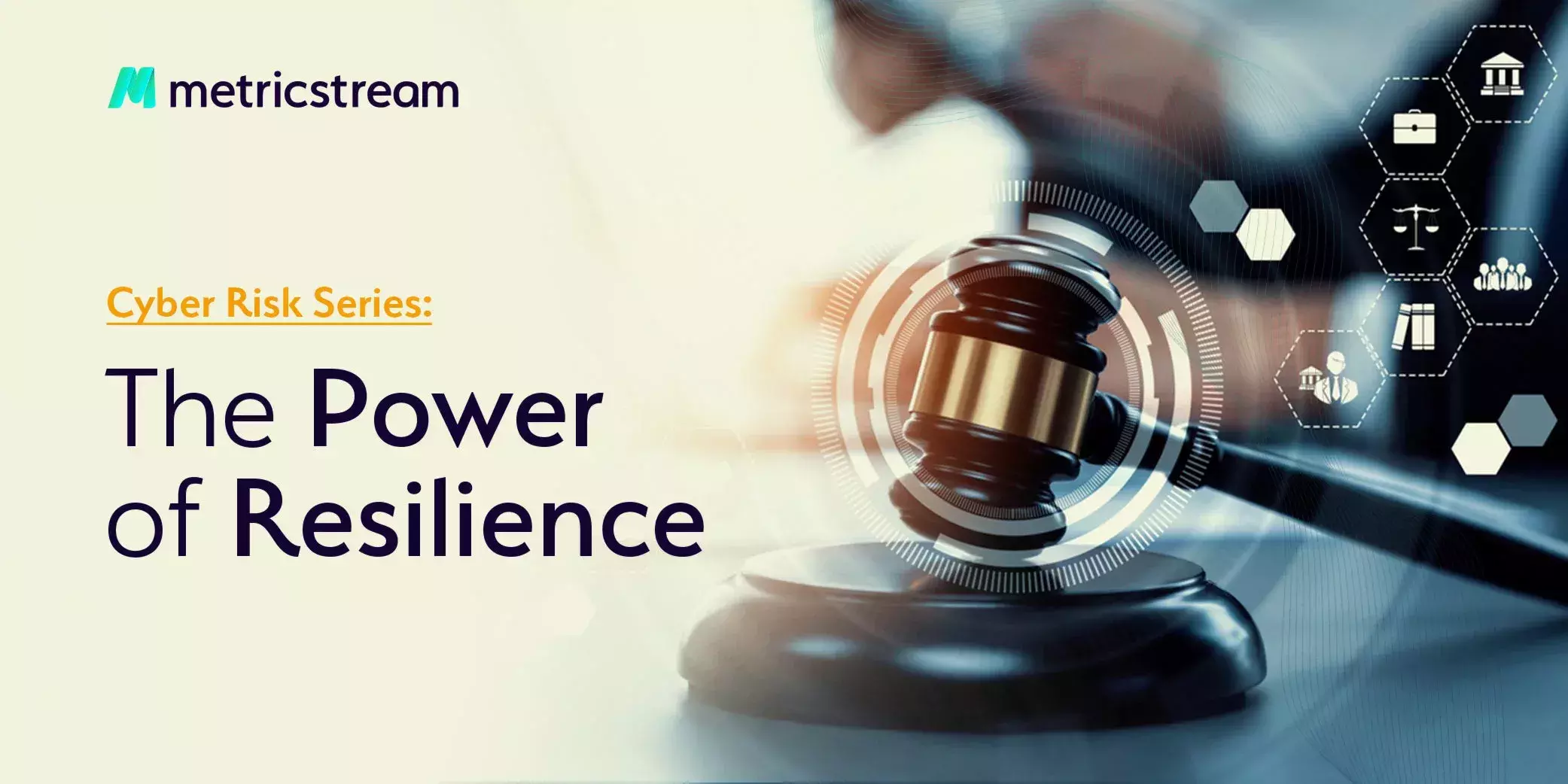
Introduction
As a cybersecurity or IT risk professional, it would have been impossible to miss all the buzz around the cybersecurity rules for public companies. On July 26, the U.S. Securities and Exchange Commission (SEC) adopted the new rules, which will require companies to transform their cyber risk management and incident reporting processes.
The new rules do not come as a surprise, given the escalating number of cybersecurity incidents and the elevated levels of cyber risks that organizations face today. In addition, it could be said that voluntary disclosures from companies have been below expectations, which impacted the visibility of customers and investors into the cyber risk postures of these companies. The “inadequate & inappropriate responses” in data and cyber breach incidents in recent years highlighted the lack of stringent regulatory mandates.
With the new rules, the SEC is standardizing the process of making disclosures about cybersecurity risk management procedures and practices by public companies, which will improve transparency and visibility for all stakeholders.
Gary Gensler, the current SEC Chair, explains, “Currently, many public companies provide cybersecurity disclosure to investors. I think companies and investors alike, however, would benefit if this disclosure were made in a more consistent, comparable, and decision-useful way. Through helping to ensure that companies disclose material cybersecurity information, today’s rules will benefit investors, companies, and the markets connecting them.”
What are the New Cybersecurity Rules?
In short, the rules will require public companies to:
- Report material cybersecurity incidents to the SEC within 4 days of determining the materiality of the incident, subject to an additional extension of the timeline at the Attorney General’s discretion
- Describe processes for assessing, identifying, and managing material cybersecurity risks, including third-party risks, and whether any cyber risks have had a material effect or are likely to do so
- Describe the board’s oversight of cybersecurity risks, the management’s role and expertise in assessing and managing material cybersecurity risks, and how the board/subcommittee is informed about cyber risks
- Disclose whether they are engaging with third-party assessors, consultants, or auditors in connection with any cybersecurity processes
- Describe whether and how their described cybersecurity processes have been integrated into the overall risk management system or processes
- Tag disclosure under incident reporting and risk management, strategy, and governance using Inline XBRL
For risk management, strategy, and governance disclosure requirements, companies will be required to provide the disclosures beginning with annual reports for fiscal years ending on or after December 15, 2023, while compliance with incident disclosure requirements will commence from the later of either 90 days after the date of publication of the final rules in the Federal Register or December 18, 2023. The rules also apply to smaller reporting companies and foreign private issuers (FPIs) but with extended compliance timelines.
How Can You Ensure Compliance?
The rules will require a robust and proven cyber risk management program, significant changes in board and management involvement, revised governance structures, effective management of third-party risks, and more.
A key takeaway is that while the rules do not directly apply to private companies, by virtue of being part of the third-party ecosystem of public companies, the rules may in effect extend to them. Implementing a cyber governance, risk, and compliance program without factoring in the extended enterprise cannot be deemed effective or complete in today’s interconnected business environment.
Here are a few measures for you to start preparing:
- Review and update incident response plans and playbook to factor in the disclosure requirements and timelines (specifically the 4-day deadline for material incidents) and how they affect the internal operations
Review and update cybersecurity and risk management programs, policies, and processes, including:
- Monitoring and testing of internal controls
- Managing and addressing threats and vulnerabilities
- Identifying and remediating issues
- Identifying and managing third-party risks
and whether it is integrated into the overall risk management system
- Establish a well-defined process for assessing the “materiality” of cybersecurity incidents
- Identify gaps and vulnerabilities in the organization’s approach to mitigate cybersecurity risks before they materialize into an actual cybersecurity event and implement appropriate processes to ensure this is an ongoing activity
- Evaluate the organization’s current cybersecurity reporting structure, including how cybersecurity incident information is relayed to management and the board
- Document the cybersecurity expertise of the members of the management team or committee/subcommittee members involved in the process, including third-party consultants, assessors, and others
Organizations can implement advanced and robust cyber GRC solutions, with capabilities for effective risk identification, assessment, and management, continuous control testing and monitoring, compliance management, incident reporting and response, graphical reports, and dashboards, to streamline their processes and achieve compliance with the new requirements.
A Greater Push Towards Cyber Resilience
There is a heightened regulatory focus on all things cyber today. The SEC rules are not the only cybersecurity and risk-related legislation that has been passed this year. Here are a few more:
- National Cybersecurity Strategy announced by the Biden administration
- Cybersecurity Maturity Model Certification (CMMC) Program by the U.S. Department of Defense
- Amendments to the Federal Acquisition Regulation (FAR)
Going forward, we expect to see more cyber resilience-focused regulatory initiatives not just in the U.S. but worldwide – and not just applicable to public companies but to organizations across all sectors and industries. Organizations, however, must not look at compliance as a checkbox exercise but as an enabler of business value and growth. Done right, organizations stand to benefit from the enhanced cybersecurity and compliance posture, streamlined processes, and improved efficiencies.
Request a personalized product demo to explore how MetricStream CyberGRC can streamline your cyber risk management program and revolutionize your compliance efforts.
Check out our other recent blogs featured in the 'Cyber Risk Series: The Power of Resilience' blog series.
Stay Prepared: Know 2023’s Top Cyber Risks
What are IT and Cyber Controls and How to Achieve Control Harmonization?
CyberGRC Prime: Simplifying IT & Cyber Risk Management with an All-in-One Solution
- IT Risk & Cyber Risk
- 26 July 23
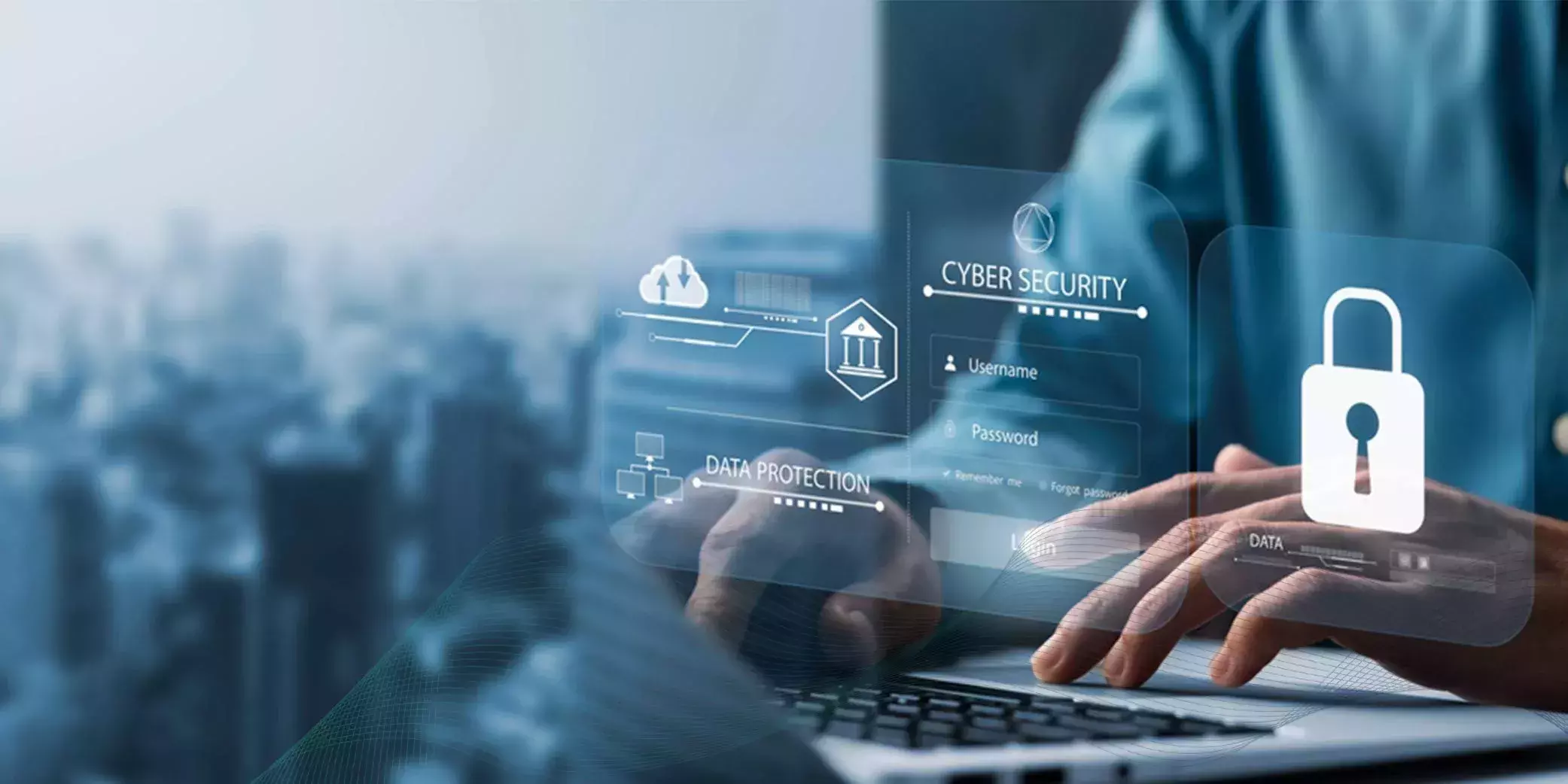
Introduction
In the foreseeable future, the unavoidable trend is that IT and cyber risks will continue to rise in volume while simultaneously improving in sophistication and complexity. There is no doubt about this, with the digital world advancing at an unprecedented pace. Today cyber risk is a top 10 risk according to the World Economic Forum, while the cost of a data breach is at a global high of $4.4M, according to thinktank, Ponemon Institute. Additionally, the interconnectedness of global systems and the increasing interdependence of economies will result in cyber risks getting amplified.
The solution lies in staying one step ahead by gaining a holistic view of your organization’s cyber risk posture, continuously adapting security strategies, and building cyber resilience—only possible with the right cyber risk product. Scroll down as we explore the key areas of cyber risk management, the criticality of a centralized platform, and how MetricStream’s CyberGRC Prime package can help.
Key Areas of IT and Cyber Risk Management
The generally considered key areas of IT & Cyber risk management are:
Threats and Vulnerabilities
This includes potential threats and vulnerabilities that can impact the confidentiality, integrity, and availability of an organization's information technology systems. These risks can arise from internal factors such as inadequate IT infrastructure or lack of employee awareness or external factors like cyberattacks. Organizations must identify and manage these risks effectively to ensure the continuity of their operations and protect sensitive information.
IT Compliance
A key area that ensures compliance with relevant IT regulations and standards. Compliance refers to adherence to legal, industry-specific, or internal requirements related to IT security and data privacy. Non-compliance can result in severe consequences, including financial penalties, reputational damage, and loss of customer trust. Therefore, organizations must establish robust IT compliance programs that include regular audits, risk assessments, and the implementation of controls to mitigate identified risks.
IT Policy Management
A vital area that plays an integral role in ensuring risk mitigation by implementing rules, guidelines, and processes for threat detection, vulnerability assessments, compliance with regulatory and framework requirements, ensuring operational efficiency for internal activities such as user roles, social media engagement, onboarding/offboarding employees, vendors and partners, incident response and resolution. Policies and, more importantly, adherence to them go a long way in ensuring the organization stays on top of its risk posture.
Third-Party Risks
Third and fourth-party risks have become an unavoidable and indispensable part of any organization’s IT ecosystem. From day-to-day applications to cloud storage, software development, or network management, these relationships introduce additional risks as the organization is dependent on the security practices and controls implemented by the third party. Failure to adequately assess and manage third-party risks can lead to data breaches, service disruptions, or non-compliance with regulatory requirements. Therefore, organizations must conduct thorough due diligence before engaging with third parties and establish proper oversight mechanisms to monitor their performance.
Complex and Interconnected Risks Require a Single, Centralized Platform
In today's world, all the above key areas of IT and cyber risk management are becoming increasingly complex and interconnected, and thus they need to be viewed together. It is, therefore, crucial for organizations to have a centralized platform to manage these risks effectively. By consolidating IT risks, IT compliance, and third-party risk on a single platform, businesses can streamline their risk management processes and reap numerous benefits such as:
360-Degree Panoramic View of the Cyber Risk Landscape
Managing IT risks, IT compliance, and third-party risks on a single platform allows organizations to have a holistic view of their risk landscape. This comprehensive perspective enables businesses to identify potential vulnerabilities and threats within their IT infrastructure, ensuring that all areas of risk are adequately addressed. By having a centralized platform, companies can align their risk management efforts, improving overall efficiency and effectiveness.
Reduce the Risk of Non-Compliance
Consolidating these different aspects of risk management helps organizations in achieving IT compliance. Compliance with various regulations and standards is essential to protect sensitive data and maintain customer trust. By having a single platform that incorporates all compliance requirements, businesses can easily monitor and track their adherence to industry regulations. This not only saves time and resources but also reduces the risk of non-compliance penalties and reputational damage.
Protect from Third-Party and IT Vendor Risk
With the increasing reliance on outsourcing and partnerships, organizations often share sensitive information with external parties. However, these third-party relationships can introduce significant cybersecurity risks. By centralizing third-party risk management on the same platform as IT risks and compliance, businesses can ensure that all potential vulnerabilities are identified and addressed. This proactive approach minimizes the chances of a cyber breach or data compromise through third-party channels.
Break Down Organizational Siloes
Consolidating these risk management processes on a single platform enhances collaboration and communication within the organization. Different departments can easily access and share information related to IT risks, compliance requirements, and third-party risks. This improved visibility enables cross-functional teams to collaborate effectively and make informed decisions that align with the organization's overall risk management strategy.
While the numerous benefits are inherently apparent, the current challenge faced by organizations is the unavailability of integrated and consolidated platforms that can proactively manage all the key areas in IT and cyber risk. The market currently offers only single-solution products. High-quality and reliable products that can cater to the comprehensive needs of cyber risk leaders are still in a nascent stage.
MetricStream CyberGRC Prime: A Pre-Packaged, Integrated SaaS Solution
This is where MetricStream's CyberGRC Prime Package comes in. CyberGRC Prime Package is a pre-packaged, integrated SaaS solution designed to streamline and enhance your IT and cyber risk and compliance program. You gain:
Comprehensive and Integrated Solution
One of the most significant advantages of the CyberGRC Prime package is its comprehensive and integrated approach to cyber risk management and compliance. With four built-in modules covering Risk Management, Compliance Management, Policy Management, and Third-Party Risk Management, the package provides a holistic view of an organization's risk landscape. Some specific benefits include:
- Pre-configured workflows for conducting bespoke risk assessments at pre-defined intervals
- Built-in compliance frameworks that enable simplified and quick set-up to create a bespoke compliance repository
- Automated compliance management, which reduces manual effort, minimizes errors, and speeds up compliance activities
- Enhanced ability to define, attest, distribute, communicate, assess, and manage policies and procedures related to IT and cyber risk management
- Effective due diligence, tiering, continuous monitoring, and risk mitigation of third-party risks
In turn, this integration allows companies to break down silos and create a unified risk and compliance framework. Teams can collaborate seamlessly across functions, sharing information and insights that lead to better risk mitigation strategies and streamlined compliance efforts.Rapid Deployment and Hassle-Free Implementation
When it comes to adopting new software solutions, time is of the essence. CyberGRC Prime package's pre-packaged nature ensures a rapid deployment process in a matter of weeks and not months, thus allowing your organization to get your risk and compliance programs up and running quickly and realize quick time-to-value. In practical terms, this translates into immediate risk visibility and actionable insights. Your organizations can now identify vulnerabilities and potential threats promptly, enabling you to respond faster to emerging risks and incidents. This agility is crucial in today's fast-paced cyber threat landscape.
Fixed and Visible Cost
It is important to determine the total cost of ownership of any solution. The CyberGRC Prime package makes this possible with fixed costs for the duration of the term with no hidden costs or surprise price escalations, which provides management with clear and unambiguous visibility into investment requirements and returns on such investments.
By leveraging the CyberGRC Prime package, your organization is empowered to confidently navigate the complex landscape of cyber risks and regulatory requirements, safeguarding your operations and reputation in an increasingly digital world.
So why wait any further?
- Set up a demo and see it in action
- Request for a limited period trial and see the benefits for yourself
Learn more: Download our CyberGRC Prime package product overview.
The 3 A's to Advancing Your Organization's Cyber and GRC Maturity
- IT Risk & Cyber Risk
- 22 June 23
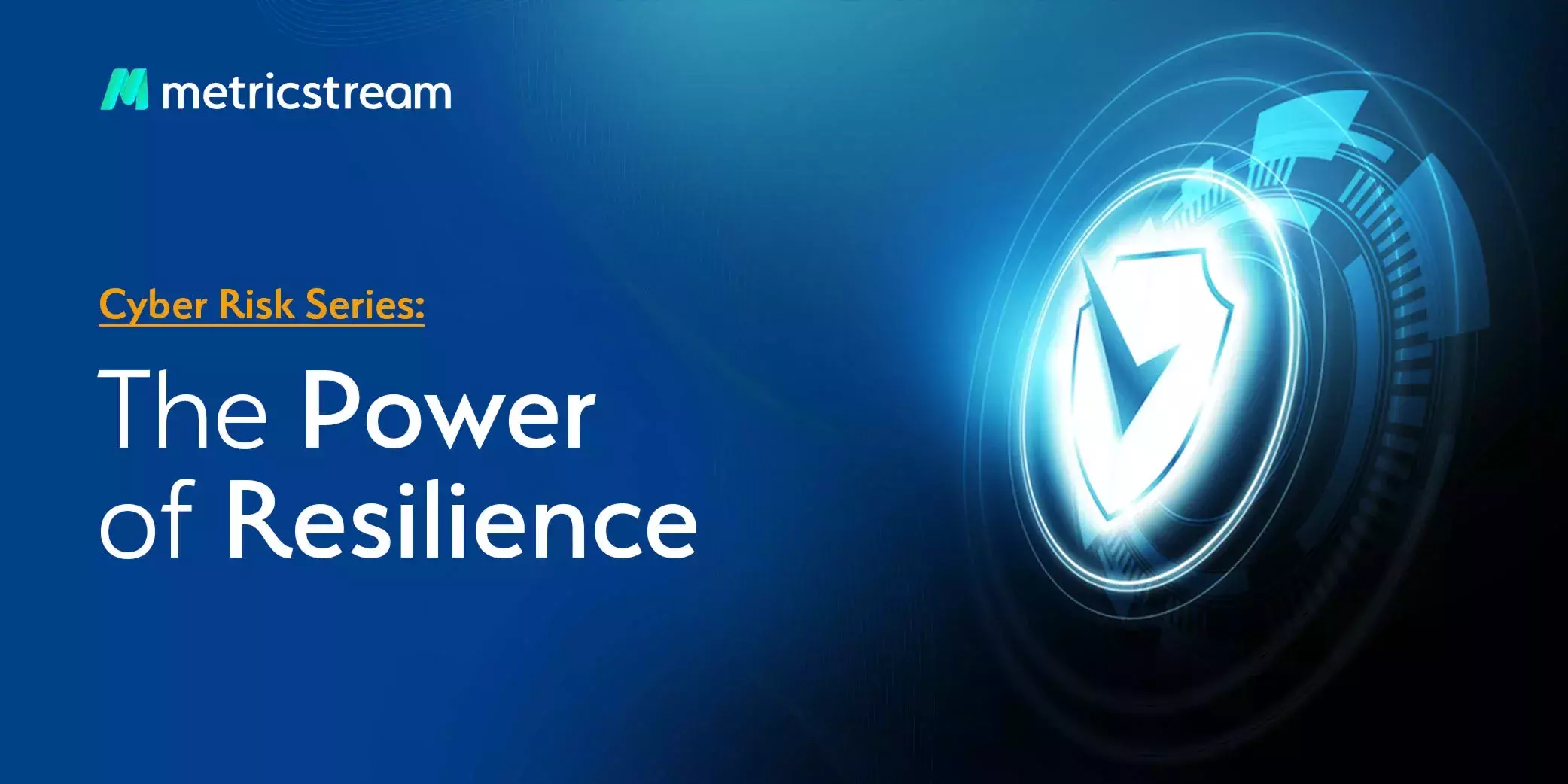
Introduction
Today, everything is digitally connected and moving fast – and so are risks. Organizations today are exposed to multi-dimensional, high-velocity, high-impact, and interconnected risks – from cyber to compliance to environmental.
At the same time, regulations, security, and compliance requirements are rapidly escalating and becoming increasingly complex. You need speed, agility, and accuracy to not just navigate but succeed in today’s hyper-digitized business environment. But how?
Automation, Autonomy, Analytics – these are the three A’s that will shape future companies and business models, and help them advance on the governance, risk, and compliance (GRC) maturity curve, as well as prevent escalating cyber security risks. Let’s take a closer look.
Automation
One might say that automated workflows and processes are a given today. But you would be surprised by the number of organizations that are still highly dependent on manual efforts, spreadsheets, and siloed operations – from managing risks and compliance requirements to cash management, to project management, to recovery planning, and more. Automation is on every company’s strategic agenda, but it’s a long road ahead.
Adopting technology solutions and software tools can significantly accelerate various processes and minimize human effort. For GRC professionals, chief risk officers, and CISOs, automation can enable focus on analysis of risk and compliance data, risk prevention, and robust GRC strategic plans than focusing on mundane, repetitive tasks, such as conducting risk and control assessments, capturing regulatory alerts, and sending alerts/notifications to relevant users.
That said, automation alone is not enough.
Organizations need to move away from siloed and disjointed processes to integrated, connected approaches. Integration and connection help to eliminate redundancies, get the right information to the right person at the right time, and reduce cost, effort, and workload. Only then can an organization truly realize the benefits of automation.
Finally: pivoting towards automation is not easy. Success depends on a number of factors – backing from the C-suite and top management, budget and financial resources, and, above all, enterprise-wide culture change and acceptance.
Autonomous
It wouldn’t be an exaggeration to say that autonomous business processes are the future. While automation means using tools and technology to reduce human effort, it still depends on some human involvement for monitoring and supervising the processes.
Autonomous processes are those that can function without any human intervention – they are always on and running continuously in the background. Automation could be regarded as the first step toward becoming autonomous.
Autonomous processes and business models will be critical to keeping up with the ever-evolving risk and regulatory landscape going forward. It is next to impossible for any organization to continuously identify threats and vulnerabilities, test and monitor controls, etc. with a manual approach.
Usually, one establishes a cadence for performing such activities – quarterly, half-yearly, annually – mainly due to the cost and the effort involved. However, this periodic approach fails to provide real-time insights and results in a reactive approach to GRC and cyber risk management.
By ensuring continuous and complete testing and monitoring, autonomous processes help eliminate blind spots. They’re working even when you aren’t, flagging your team to risks so you can remediate them before they become full-blown issues. Timely insights improve agility in decision-making required to stay ahead of the game.
Continuous control monitoring (CCM) is part of the MetricStream strategy to use machines vs humans to perform tasks and provide autonomous capabilities to organizations. CCM allows you to detect more deviations more often compared to the manual testing method that fails to spot risks and potential compliance failures, letting them slip through the cracks. With CCM, you can proactively identify risks, improve cybersecurity and compliance posture, reduce audit costs, and support rapid remediation while increasing efficiency, visibility, accuracy and scalability.
Read More: Improve Your Cyber Risk Posture and Compliance with Continuous Control Monitoring from MetricStream
Analytics
Harnessing the power of data is critical to bring accuracy to decision-making. Data powers modern business. However, data alone cannot add business value. By leveraging analytics, AI, and statistical tools, organizations can transform raw data into actionable insights to make better-informed decisions.
First, though, organizations need to ensure data integrity and structure. In our conversations with companies across industries, we often hear that a lack of a single view of risks is a key challenge. Different business units use their own risk languages and definitions. This results in unstructured data that is difficult to consolidate and analyze. Establishing a common taxonomy is crucial for analytics and next-gen technologies, such as AI, to turn data into insight.
Automation, autonomy, and analytics are central to MetricStream’s product vision with many capabilities in today’s products and many more to come. Artificial intelligence (AI), Natural Language Processing (NLP), a simulation engine, and API technology are all core capabilities of the MetricStream Platform:
- Autonomous Evidence Collection and Continuous Control Monitoring work continuously to test control effectiveness and enable easier remediation
- With risk quantification, a built-in Monte Carlo simulation engine is used to run scenario analysis and predict annualized losses
- NLP is used to understand the intent of searching and provide better search results for documents than traditional keyword-based searching
- AI-powered Issue Management analyzes large volumes of issues and, more importantly, recommends best practices remediation for more effective and efficient remediation
- APIs enable the incorporation of your internal risk data and other applications for a single view of risk across your enterprise
Read More: A Comprehensive Guide to Cyber Risk Quantification
What does the future hold? It’s never sure, but’s clear that you’ll continue to see more autonomy with automated risk rankings with no humans required, automatic connections of risks to controls and standards/regulations, and much more. Stay tuned!
How can MetricStream help you today? Let us show you how we can help you manage your GRC and cyber risk needs – automatically, autonomously, and with powerful analytics. Reach out today for a demo.
The Next-Gen CISO - Building Cyber Resilience with Cyber GRC
- IT Risk & Cyber Risk
- 25 May 23
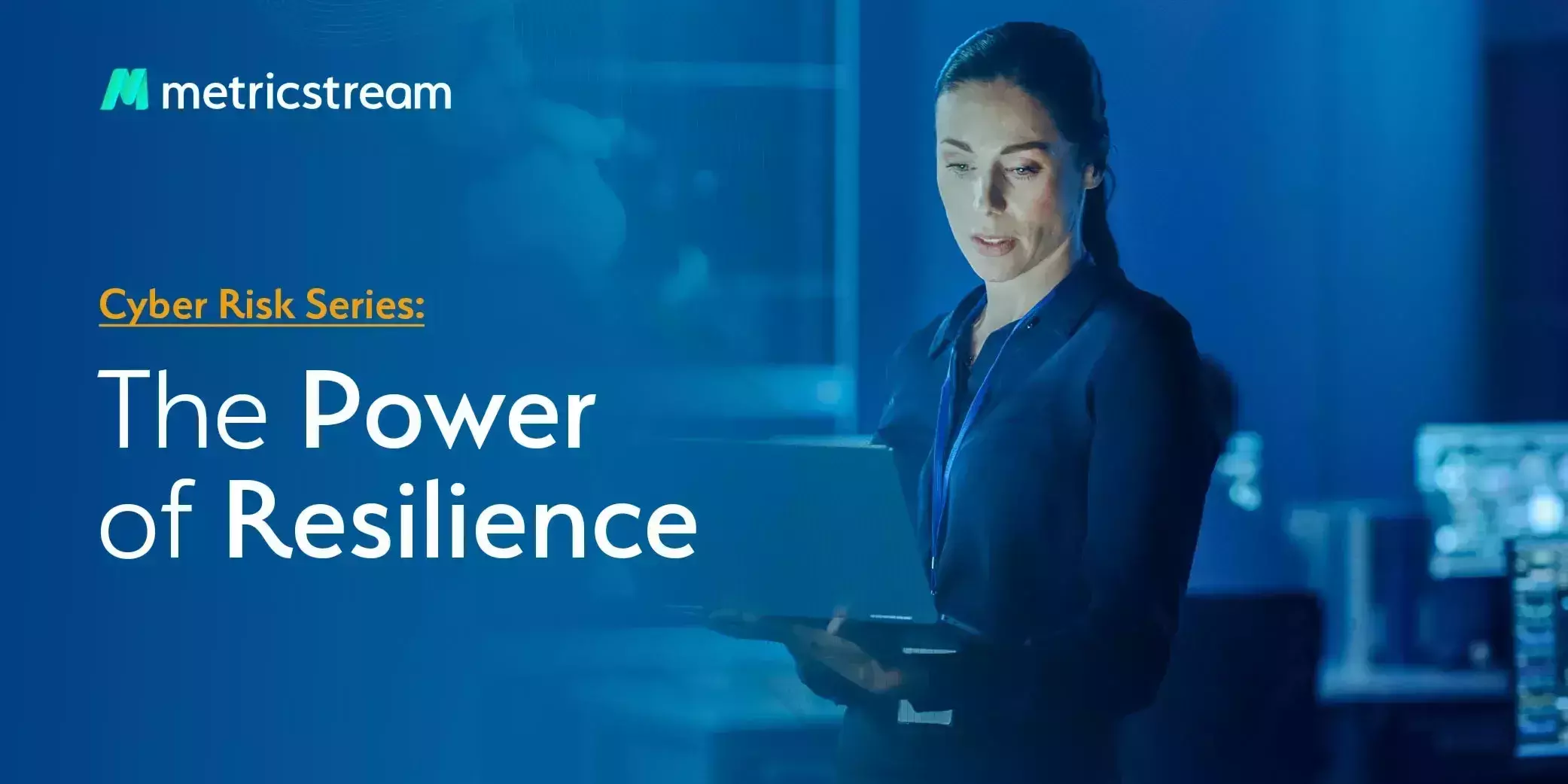
Introduction
I’ve worked with Chief Information Security Officers (CISOs) and one thing I can say with certainty is that CISOs are unquestionably busy people. I liken it to the cartoons of old when a character would be ducking, dodging, and fending off arrows with bare hands. CISO are managing risk, monitoring IT compliance, fending off ever-changing threats, looking for vulnerabilities, and creating a culture of cybersecurity awareness – all day, every day!
I’ve made the CISO role sound somewhat tactical, but it’s highly strategic and has become even more so since the early stages of the pandemic when CISOs were front and center among the many IT professionals who worked quickly to ensure business continuity. From securing the remote systems and the data of employees who suddenly had to start working from home from cyberattacks to simultaneously managing increased regulatory scrutiny, the CISO’s role has become one of the most significant in the enterprise.
As cyber GRC challenges such as enhanced cyber risks, new regulations, and accelerating digital transformation continue to dominate the business landscape, the CISO’s role continues to evolve faster than ever.
The role has expanded outside of IT to become a key enabler of business performance by protecting business assets and data privacy. A 2021 survey of global CISOs found that 45% of CISOs held responsibility across the three key areas of security, risk, and trust. And according to the top cybersecurity predictions, revealed at the opening keynote of the March 2023 Gartner Security & Risk Management Summit in Sydney, “the CISO role and purview of responsibility is shifting from being control owners to risk decision facilitators.” The CISO role has come of age – and is evolving into the next-gen CISO.
So, who is the next-gen CISO? Here are some of the roles today’s CISO plays:
- The executive sponsor for security change: CISOs now drive security from a business perspective. This requires aligning with and understanding the business strategy, managing end-to-end cyber risk management, and building cyber resilience. As the leader of cyber risk management and GRC at the organization as well as the owner of the information technology roadmap, the CISO must map organizational strategy, technology, infrastructure, compliance requirements, and core cyber risks to embed cyber security into the culture, process, and technology. The CISO also leads security change by maintaining a line of sight into technology trends and disruptions and aligning information security investments and cyber risk mitigation steps with business priorities.
- The builder of information security and data protection assurance: The CISO plays a key role in building a robust information and data protection program, leveraging the information security of the organization to enable business objectives. This includes establishing the cyber risk management framework for sustainable protection assurance for all intangible assets and strategic advantages. Regular network monitoring, performing of cyber audits, and training both cyber security and general employees in security protocols and safe practices are now CISO responsibilities.
- The leader of third-party and IT vendor relationship management: With third and fourth IT vendors now part of the extended ecosystem, the CISO is responsible for identifying risk through third parties and managing third-party security. Identifying and ranking vendor relationships, performing due diligence, conducting regular security evaluations, monitoring vendor compliance with cyber security standards, tracking updates, etc., are some of the key priorities that the CISO steers.
- The director of continuous IT compliance and governance: In the era of cyber GRC, a CISO’s role now includes enabling continuous regulatory and standards compliance across all digital assets and processes. Cyber governance, including overseeing the smooth running of cyber resilience initiatives and regular reporting to corporate leadership, also falls under the purview of the CISO.
- The chief communicator of cyber risk: With cyber risk being such a critical area, the CISO holds the unique responsibility of communicating cyber risk in a language that the board and the rest of the C-suite can understand. Technical cyber security details are often not easily comprehended, and risk expressed in heat maps can be vague. Cyber risk exposure quantified in monetary terms, on the other hand, can effectively paint a clearer picture of the cyber risk.
MetricStream CyberGRC – Empowering CISOs to Build Cyber Resilience
MetricStream’s CyberGRC, built as an interconnected, intuitive, and intelligent GRC product set, empowers CISOs to connect cyber risk data from across the enterprise, including third and fourth-party vendors, and then use the actionable business intelligence to make data-driven decisions to build cyber resilience.
With MetricStream CyberGRC, you can:
- Quantify cyber risks in monetary terms to assess cyber risks more accurately, communicate the risk more effectively, and make better-informed cyber investment decisions
- Document, investigate, and resolve IT compliance and control issues in a systematic, automated manner with AI-powered intelligent issue and remediation
- Strengthen visibility into the overall IT compliance profile with intuitive dashboards and real-time reports
- Harmonize controls across multiple IT regulations and frameworks, improving compliance and saving effort and costs
- Protect cloud assets with automated continuous monitoring of controls
Being a CISO is hectic and stressful – but it’s also incredibly important, and I for one look forward to watching the continued evolution of the role, as CISOs grow to become more and more business as well as IT and security champions. Cyber is one of the biggest existential risks enterprises face today. The next-gen CISOs are here to lead us through – even as they dodge the many arrows. We’re rooting for you!
Want to learn more about how MetricStream CyberGRC can help build cyber resilience? Write to me at pmcparland@metricstream.com. You can also try our customized demo to see how our product works.
Learn More on Cyber Resilience at the GRC Summit!
Come join us for the GRC Summit, the most influential gathering of governance, risk, compliance, audit, cyber, and ESG professionals, to be held in Miami this year on June 14-15. At the event, industry thought leaders, including cyber risk experts, will share their perspectives on some of the most pressing issues faced by organizations today. This includes how to leverage AI and automation for robust cyber risk programs, effectively manage IT and cyber regulations, and build cyber resilience. Leading organizations across industries will discuss their GRC journey experience and provide insights into the challenges they faced and the benefits they realized.
Check out more resources on managing cyber risk:
eBook: 5 Connections Every Cyber Risk Leader Must Make for Driving Cyber Resilience
Infographic: 7 Urgent Cyber GRC Challenges to Prepare for Now
eBook: CyberGRC Buyer’s Guide
How to Present Cyber Risk to Your Board: 4 Essential Steps
- IT Risk & Cyber Risk
- 09 May 23
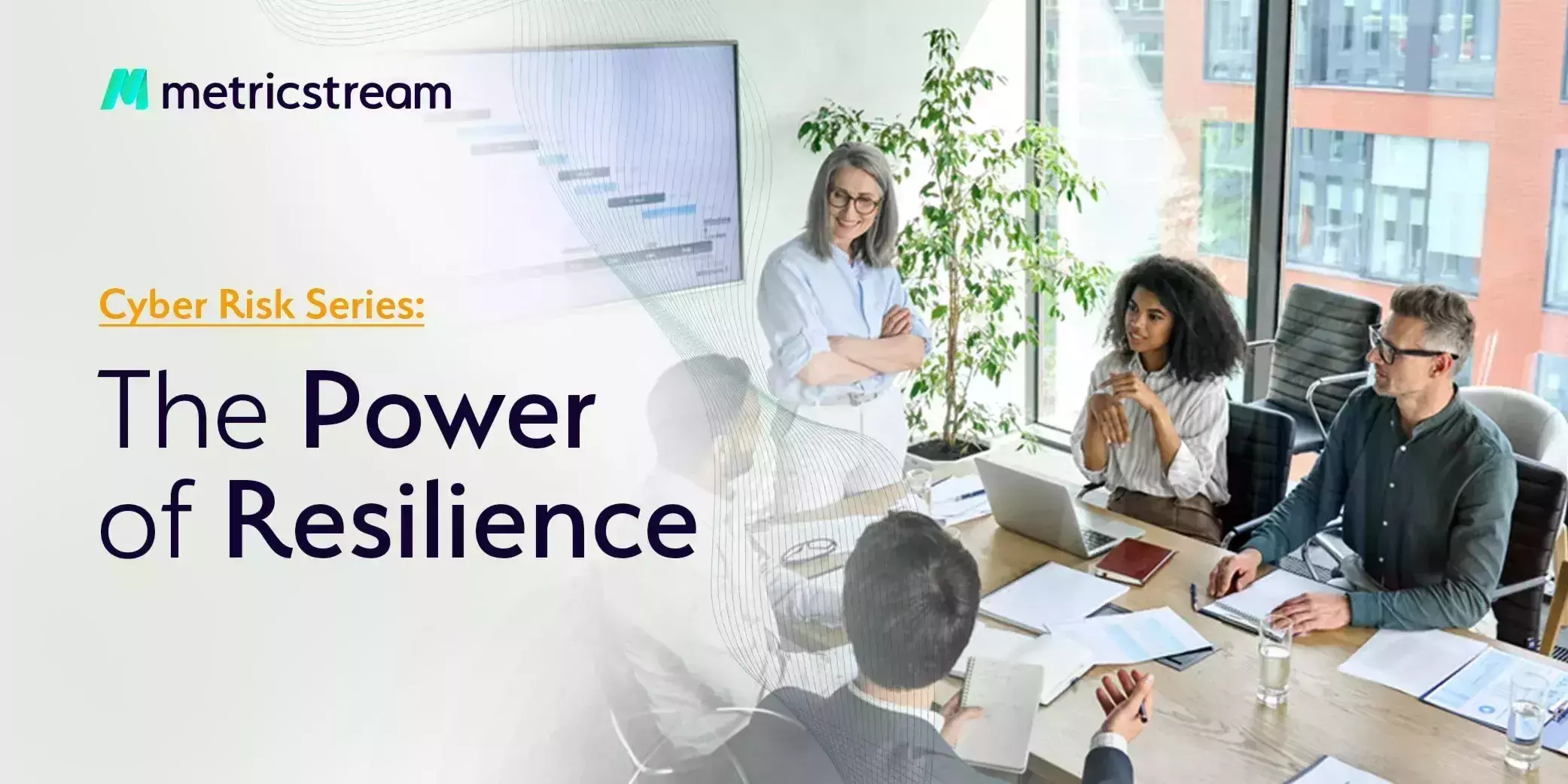
Introduction
Today’s boards don’t need to be convinced that cyber risk management is important. 88% of boards of directors view cybersecurity as a business risk, according to the 2021 Gartner Board of Directors Survey. Over half (51%) of board members surveyed by PwC cite cyber-attacks as a serious risk (and another 35% as a moderate risk) – more than any other category. Also, 68% of directors told MIT Sloan researchers that their board discusses cybersecurity regularly or constantly.
Despite this, only 33% of directors say they think their board understands the company’s cybersecurity vulnerabilities very well. What’s more, boards are often out of sync with their CISOs. Sixty-five percent of board members surveyed by Proofpoint and MIT Sloan believe that their organization is at risk of a material cyber-attack in the next 12 months, compared to 48% of CISOs.
Clearly, there is room for improvement in aligning board members with your cyber risk strategy. Here are four tips that you, as a cyber risk or security leader, can use to communicate cyber risks to your board in a way that gets them in sync with your vision, helps them understand what’s at stake, and drives them to bolster your organization’s cyber defenses.
Focus on Business Impact
While today’s boards are much more cyber-savvy, it’s still important to convey risks in a language that everyone understands. Keep your presentation simple, minimizing technical speak. Focus instead on the business metrics and impacts that matter most to the board.
For example, instead of presenting a list of vulnerabilities and threats, you might want to talk about how these issues will impact the organization’s revenue, reputation, and strategy.
Map out the attack surface, so the board can clearly visualize which threats are most critical, which pathways they can take through the organization, and which assets are most at risk. Support your case with real-world breach stories and the losses faced by peers in your industry.
Also, remind your board that cyber risk management is about more than securing data. With increasing digitization, more processes are going online, more operations are being managed remotely, and more systems are being connected. So, a threat anywhere along this chain can have a devastating snowball effect. The more clearly boards understand this, the faster they can act.
Quantify the Cyber Risks
Words don’t always make a compelling cyber case – but numbers do, especially financial numbers. If you want your board to invest more in cyber risk management, find a way to quantify the monetary impact of risks. Saying that a ransomware attack could be “fairly severe and fairly likely to occur” is far less impactful than saying that a ransomware attack could cost the organization $1 million with a 60% chance of that loss occurring.
Cyber risk quantification makes it easier to answer the board’s questions on how much to invest in cybersecurity, what the return on investment will be, and which risks to focus on first. It also helps companies measure how much of risk reduction has been achieved over time.
There are plenty of tools and frameworks to assist with cyber risk quantification. The Factor Analysis of Information Risk (FAIR™) model can help you quantify security risk exposure in terms of the dollar value at risk. A Monte Carlo analysis simulates various cyber risk event scenarios so that you can predict potential financial losses from each one.
And of course – a picture is always worth a thousand words. Express your numbers in visuals and graphs for maximum understanding and impact.
Expand the Conversation Beyond Technology
Boardroom conversations around cyber risk management often revolve around technology-based defenses and controls – be it firewalls, encryption software, packet sniffers, or vulnerability scanners. While these tools are essential, they’re just one part of the cybersecurity program. CISOs also need to be talking to boards about:
- Updating cybersecurity policies and procedures in line with the latest industry guidelines
- Running regular cyber risk training and awareness programs at all levels of the enterprise
- Making it easy for frontline employees to capture and report potential cyber risks
- Building a business continuity and recovery program in case a cyber-attack does occur
- Investing in sufficient cyber insurance coverage
The idea is to create multiple layers of protection, each supporting the other, and together providing a solid defense against cyber threats.
Don’t Overlook Third Parties and IT Vendor Risks
The sheer number of IT vendors that we as organizations depend on for cloud services, data back-up, remote IT support, and more makes it essential to have a robust third party and IT vendor risk management program. Ensure that your board understands why. Showcase the impact of IT vendor risks in relation to enterprise risks.
Consider creating a centralized map of IT vendors, the business units they serve, where they operate, associated regulations, controls, etc. – so that the board has a clearer picture of the IT vendor risk universe and where to allocate resources for optimal impact.
Also, be prepared to answer targeted questions from the board, such as: How do you monitor fourth-party cyber risks? Do you conduct due diligence only at the beginning of the vendor relationship or at regular intervals? And how do you offboard IT vendors to ensure that they no longer have access to sensitive data?
5 other questions that the board seeks answers to:
- Which critical assets are most vulnerable to cyber risks, and how are we protecting them?
- How are we dealing with cyber risks that are not directly within our control?
- How do we stay up-to-date on the latest cyber threats and vulnerabilities?
- How does our cyber risk management program stack up against industry standards such as the National Institute for Standards and Technology (NIST) Cybersecurity Framework?
- If a cyberattack were to occur, do we have a plan? And what should our (the board’s) role be?
How MetricStream Can Help
MetricStream CyberGRC gives you and your board comprehensive visibility into IT and cyber risks, assets, processes, and controls. Using our cyber risk quantification capabilities, you can swiftly measure the dollar impact of cyber risks to help your board prioritize their cyber investments more efficiently.
You also get powerful capabilities to assess cyber risks and controls, monitor the threat landscape, manage cyber compliance and policies, and keep IT vendor risks in check – all of which goes a long way towards strengthening the board’s confidence in your cyber risk management program.
Check out more resources on managing cyber risk:
eBook: CyberGRC Buyer’s Guide
Infographic: 7 Urgent Cyber GRC Challenges to Prepare for Now
Case Study: U.S. Telco Giant Makes Cybersecurity Decisions 60% Faster by Quantifying the Dollar Impact of Cyber Risks
Request a demo now!









